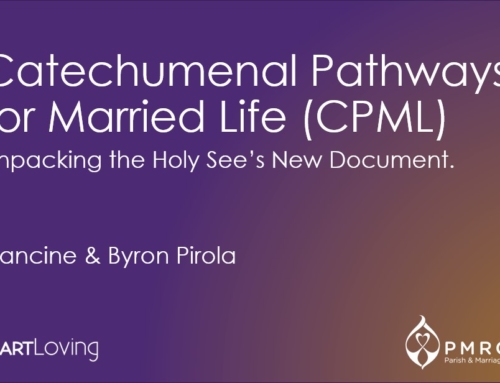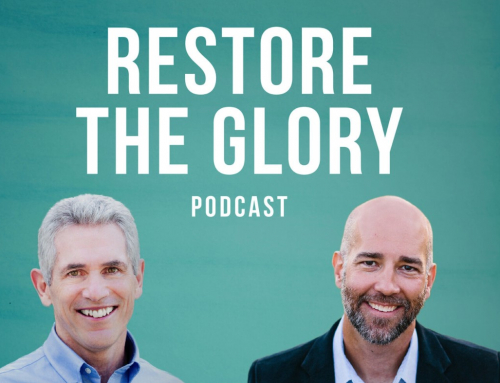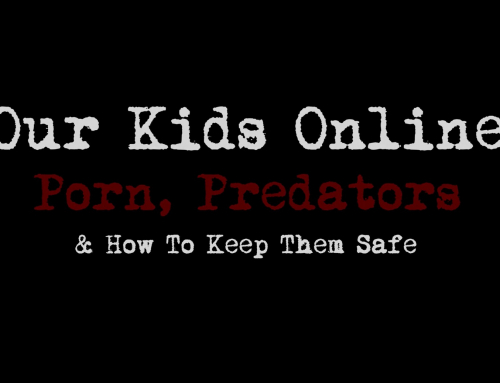The Impact of Pornography on Children and Families
IPS: Institute of Psychological Sciences
A Catholic Graduate School of Psychology
The following is an excerpt from Pornicious: The Impact of Pornography on Children and Families, a white paper published by the Institute of Psychological Sciences authored by Fr. Charles Sikorsky, LC, JD, JCL. His premise is that pornography is a grace threat to our children, marriages, and families; and that we simply cannot wait five decades to enact regulations.
[Yes, “Pornicious” is a play on the word “Pernicious” which Webster defines as something highly injurious. PORNICIOUS therefore can be defined as something highly injurious resulting from the effects of pornography1.]
To Read the full article: hereThe “adult” entertainment industry now boasts that it, “makes over 13 billion dollars every year, up from 10 billion in 2004… far more money annually than Hollywood or made-for-TV movies. The supply of porn (either online, on DVDs or pay-perview television) is huge…Americans are huge consumers of porn and their appetite is growing.”
Surprisingly, the industry also concedes simultaneously that, “STDs are found in about 25 percent of porn actors… infections of gonorrhea and chlamydia are huge – seven times more than the general population…these two diseases are running rampant in the industry. Testing doesn’t stop the spread of STDs…”11
…Dr. Mary Ann Layden is Director of the Sexual Trauma and Psychopathology Program at the Center for Cognitive Therapy, Department of Psychiatry (University of Pennsylvania). Dr. Layden cites data statistical and anecdotal linking porn and violence at great length:
We learn better using images than words, because images carry more information in a more compact form. A split-second look at an image can convey more information than a split-second look at words.
Words are often perceived as opinions while images are often perceived as events or facts…If something activates our sympathetic nervous system, we are more prepared to remember the information received at that point…We tend to remember any experience we have in those aroused states. And learning is better if it is reinforced. Learning is also better if we see role models perform a behavior…
Finally, we learn better when the learning is rewarded…
Pornography can offer all these elements—images, arousal, reinforcement, the example of others, and reward—so it is a potent teacher of both beliefs and behaviors. It provides the ideal conditions for learning.
One category of beliefs we learn is called “permission-giving beliefs”…They give us permission to engage in a behavior we would like to engage in or are engaging in and tell us there is no need to stop, change, or reduce it—they tell us, for example, that what we are doing is normal, that it doesn’t hurt anyone, and that everybody is doing it…
Pornographic depictions of the sexuality of women and children distort the truth about desires of women and children, and legitimize men’s sense of entitlement, and use of force, violence, and degrading acts…In other words, pornography has the ability not only to teach social attitudes and behaviors, but also to give permission to engage in them. Permission-giving beliefs become releasers of behavior…It is not surprising that many psychologists call internet pornography the new “crack cocaine”…Some of these behaviors are pathological, illegal, or both…
This learning produces effects in attitudes toward sexual violence, relationships, the attractiveness of a partner, and women’s liberation, and in sexual violence behaviors, pedophilia, sexual harassment, domestic violence, prostitution, sexual deviance, drinking, and physically risky behavior.
Even women who were exposed to pornography as a child have a greater acceptance of the rape myth [that women desire rape] than those who were not. Those exposed to pornography recommend a sentence for a rapist that was half of that recommended by those who had been shown nonpornographic imagery. These subjects appear to have trivialized the crime of rape….
Another study examined measures the likelihood of future sexually violent behavior as well as past actual sexually violent behaviors. It found that all types of pornography (soft core, hard core, violent, and rape) are correlated with using verbal coercion, drugs, and alcohol to sexually coerce women…
The likelihood of raping a woman was correlated with the use of all types of pornography, including soft-core pornography. All types of pornography other than soft core were correlated with actual rape.
Those reporting higher exposure to violent pornography are six times more likely to report having raped than those reporting low exposure.
…Similarly, men who engaged in date rape reported that they “very frequently” read Playboy, Penthouse, Chic, Club, Forum, Gallery, Genesis, Oui, or Hustler. The correlation between rape rates and circulation rates for eight pornographic magazines (the same magazines minus Hustler) indicated that states with higher circulation rates had higher rape rates.
Adolescent boys who read pornographic material were more likely to be involved in active sexual violence…Similarly, adult sex offenders showed a high rate of using hard-core pornography: child molesters (67%), incest offenders (53%), rapists (83%) were significantly higher in use than nonoffenders (29%)…
A meta-analysis of thirty-three studies (meta-analyses examine findings across a large number of studies) revealed that exposure to either violent or nonviolent pornography increases behavioral aggression.
…These studies taken as a whole indicate that many types of pornography and frequent use of pornography are connected to negative behaviors—both violent fantasies or actual violent assaults—with violent pornography…
The likelihood of sexually harassing another is significantly correlated with the volume of past exposure to sexually explicit materials
Domestic violence is another form of violence against women, and like the others it is increased by the use of pornography. The violence may typically be physical and emotional, but these are often combined with sexual violence. Battered women experienced significantly more sexual violence than women who were not battered.
For example, 39% of the battered women said that their partners had tried to get them to act out pornographic scenes they’d been shown, as compared to 3% of other women…Pornography alone increases the odds by a factor of almost two, and the combination of pornography and alcohol increases the odds by a factor of three.
Forty percent of abused women indicated that their partner used violent pornography. Of those whose partners used pornography, 53% said that they had been asked or forced to enact scenes that they had been shown…
Of the forty percent of the abused women who had been raped, 73 percent stated that their partners had used pornography….
Men who go to prostitutes are twice as likely to have watched a pornographic movie over the last year (66%) than a national sample (33%). Men who go to prostitutes frequently are more likely to have seen a pornographic movie (74%) than those who have gone to a prostitute only once (53%). The same pattern is seen with the use of pornographic magazines; men who go to prostitutes frequently are more likely to have seen a pornographic magazine in the last year (75%) than men who have gone to a prostitute only once (56%).
…The frequency of sex with animals, sex in groups, and sex with violence was double in those exposed to deviant pornography when compared to those who were not…
For males, more pornography use was associated with greater acceptance of sex outside of marriage for married individuals, greater acceptance of sex before marriage, and less child-centeredness during marriage. The reduced desire for children is especially pronounced in a reduced desire for female children…
For males, more pornography use is correlated with more alcohol use and more binge drinking… It involves pathological behaviors, illegal behaviors, and some behaviors that are both illegal and pathological. Pornography is an equal opportunity and very lethal toxin.15
…..
Victory over Pornutopia: The Theology of the Body
“Being in the image of God the human individual possesses the dignity of a person, who is not just something, but someone. He is capable of self-knowledge, of self-possession and of freely giving himself and entering into communion with other persons” (Catechism of the Catholic Church, n. 357).
For the philosopher of ethics Karol Wojtyla (a.k.a. Pope John Paul II) “problems with sex are above all problems with the ‘body.’”28 That is, the problem mainly is with attitudes towards one’s own body, and those of others; attitudes which mismanagement of the body itself can help induce
“The spousal meaning of the body refers to the body’s power to express love: precisely that love in which the human person becomes a gift and — through this gift — fulfills the very meaning of his being and existence.”29 This fact is not always respected.
Thus “a person must not be merely the means to an end for another person.” Rather in all relationships the means must serve the human subject. Hence one must “remember that you may not treat that person as only the means to an end, as an instrument, but must allow for the fact that he or she, too, has, or at least should have, distinct personal ends.”
According to the Catechism of the Catholic Church – which was influenced directly by Wojtyla’s thought – “Sexuality affects all aspects of the human person” (n. 2332). For this reason pornography necessarily damages the dignity of its participants (n. 2354).
In the compilation of John Paul II’s works entitled Theology of the Body, he goes on to say that, man and woman were created for marriage and “in the mystery of [this] creation, man and woman [become] a mutual gift.”30
Pornography (and more specifically masturbation) represents a privation of the gift and therefore the exact “opposite of this ‘welcoming’ or ‘acceptance’ of the other human being as a gift.”31 Since pornographic images reduce the person being lusted over to body parts only, there is no dignity when his or her fuller human dimension is eliminated from the person as a whole. In short, the problem with pornography is not that it shows too much of the person – but that it shows far too little. It is thus unsurprising that, according to Aquinas – who influenced Wojtyla – a spouse imagining himself to make love to a person other than the other spouse during intercourse, treats the second spouse as a prostitute.
Wojtyla refers to the story of David and Bathsheba in Hebrew Scripture as an example of this behavior. Just as David could not protect the child that Bathsheba bore for him, pornography is crippling men’s ability to spiritually protect themselves, the women they love, and their families. Though mothers can be vulnerable as well, in general the father is the primary entry point of spiritual, societal, and familial health – or disease. In his Letter to Families, Wojtyla continues:
We are facing an immense threat to life: not only to the life of individuals but also to that of civilization itself…. Why is this happening? The reason is that our society has broken away from the full truth about …what man and woman really are as persons. Thus it cannot adequately comprehend the real meaning of the gift of persons in marriage, responsible love at the service of fatherhood and motherhood, and the true grandeur of procreation.32
So, what’s the solution? To learn to love one’s God with one’s whole heart, mind, soul and strength, trusting in his mercy. To love one’s neighbor – male and female – as one’s own self. For this, prayer, the sacraments, and ascesis are needed. Psychological counseling – reflective of this vision – and accountability groups appealing to a “higher power” can aid greatly as well. Above all, what is needed is the “light of faith,” hating all despair. Sadness begets sin. But hope begets daring.
Fr. Charles Sikorsky, LC, JD, JCL President, Institute for the Psychological SciencesTo Read the full article: here
Questions for Discussion
- What impact of pornography use on marriages have you witnessed, negative or otherwise?
- Do you agree with the author, that the Theology of the Body provides a way to be victorious over ‘pornutopia’?
- What strategies/resources can you suggest for couples, for parents, for schools, for churches that really work to bring about authentic freedom in overcoming the grip of porn and its negative effects?
Leave your comments below.







We’ve got to break the silence on this epidemic that is destroying families. It’s going to take the involvement of all – parents, schools, churches, government. First step is education – too many people still buy the myth that it’s just harmless fun.
It is not just “harmless fun”, it is a deafening trauma to the mind, that gives approval to be wantum, wanting, engaging, of sexual violence “because I am a good man and therefore I deserve this” the way I want it. Porn is the ground work for many who are exposed at an early age to porn by physical genitalia plays or physical relaionship abuse, when real love or respect in authentic/holistic relationships with other individuals or those appropriate at child development are simply absent. And upon gaining adulthood, the image becomes the mindset for trial to explore and adventure at. The approval is self destructive defying rebelliously what the premise or basis of the exposure to porn was in the first place. When I think of it in terms of what is traumatic brain injury, it becomes a condition or category that needs ongoing therapeutics in a practice but, not to cure from porn, but to assist the mind of the damage/trauma which has become a dependency to feel or be elated/esteemed about the individual self. A keen therapeutic practice is required I believe to recognize the earliest trauma that has been lived by. It could be years, and years in practice.
I am a NYC/NYS permamently licensed special educator.